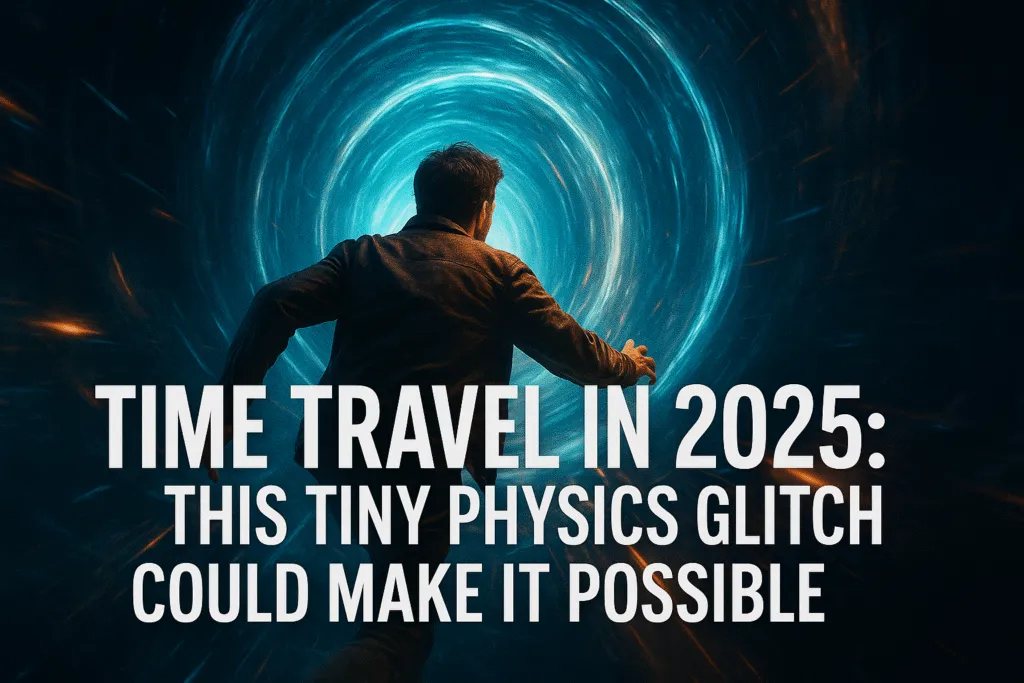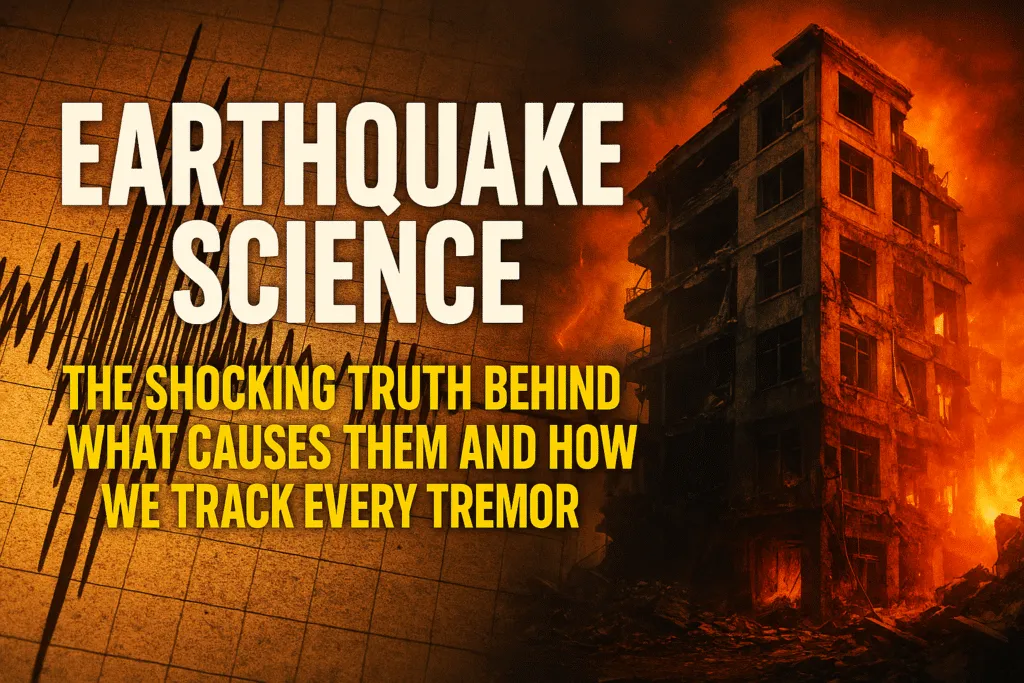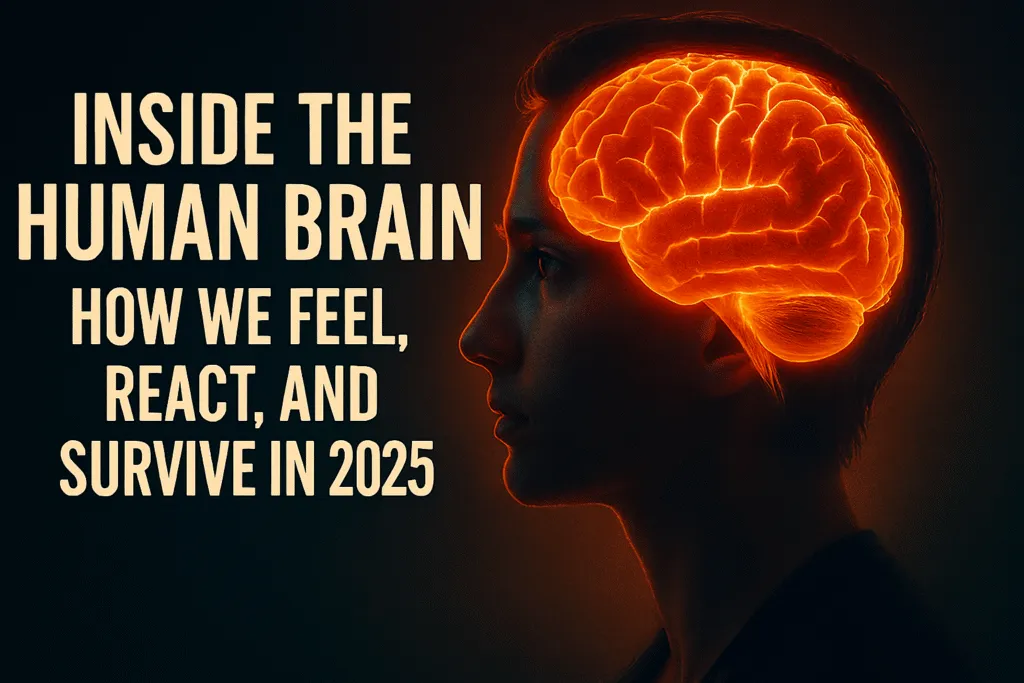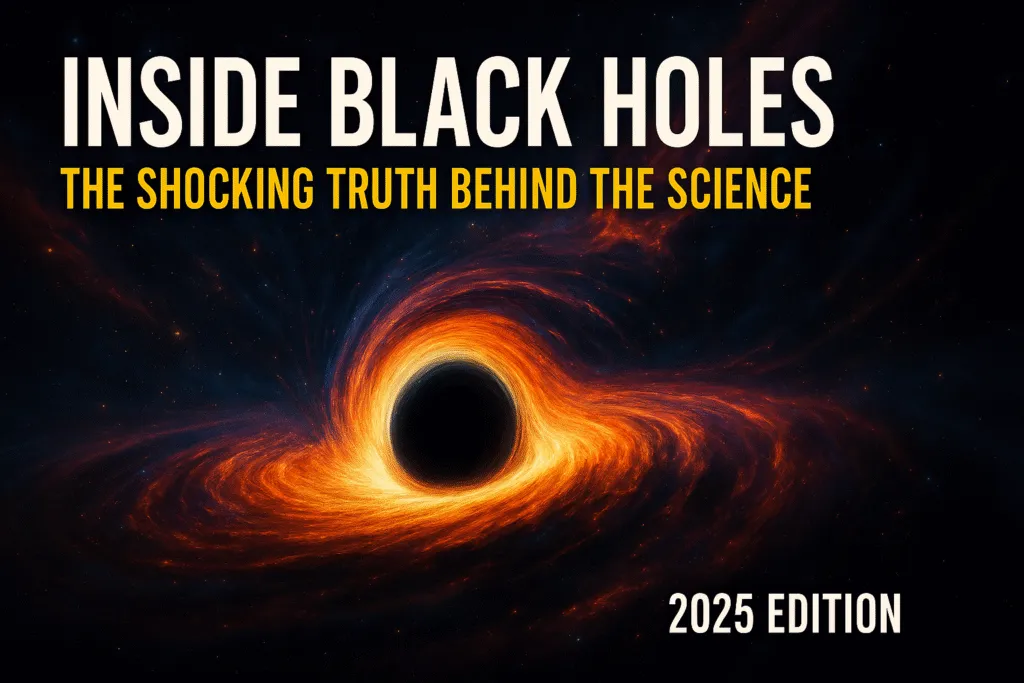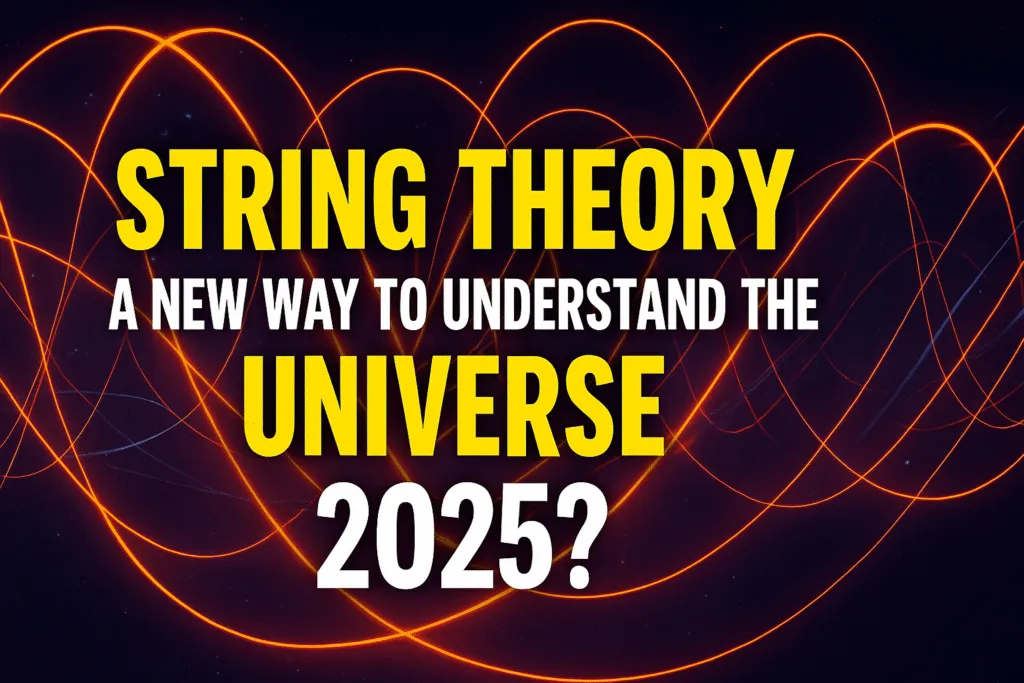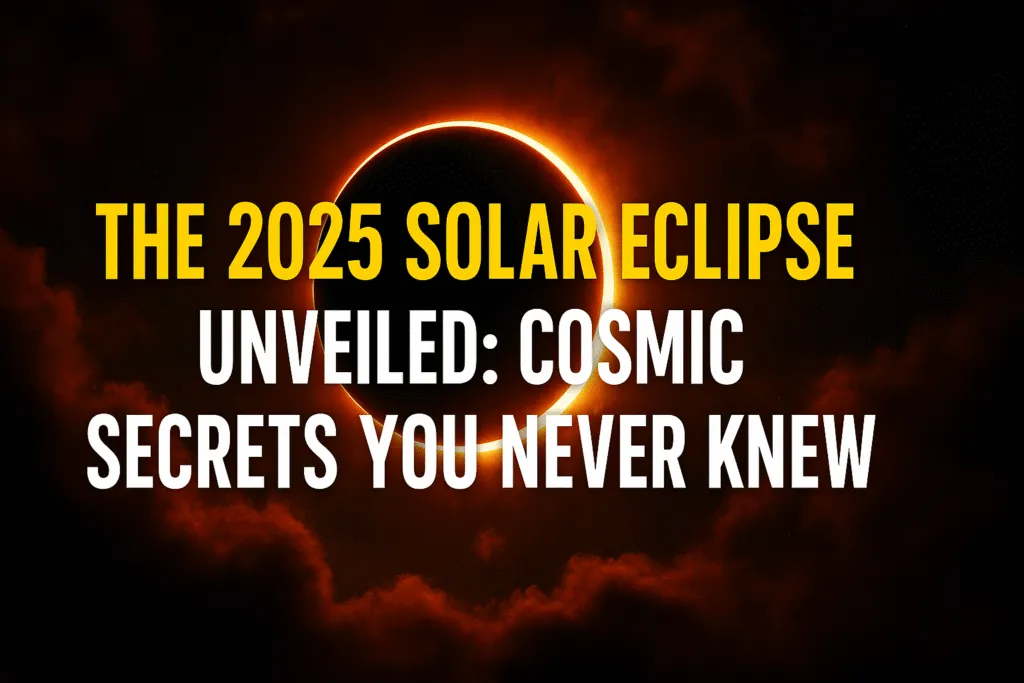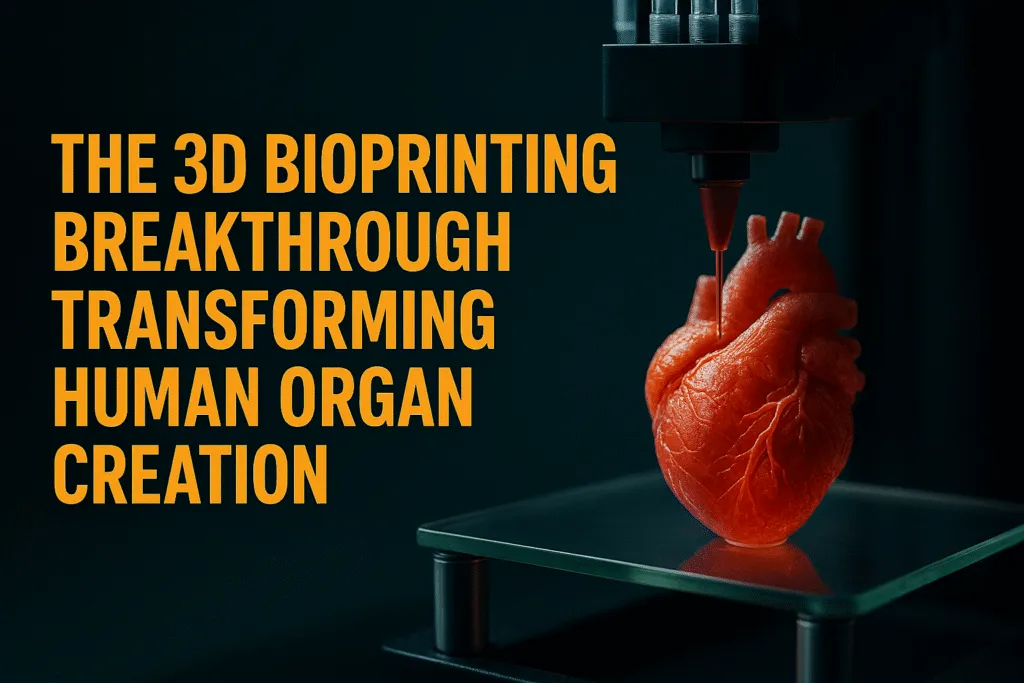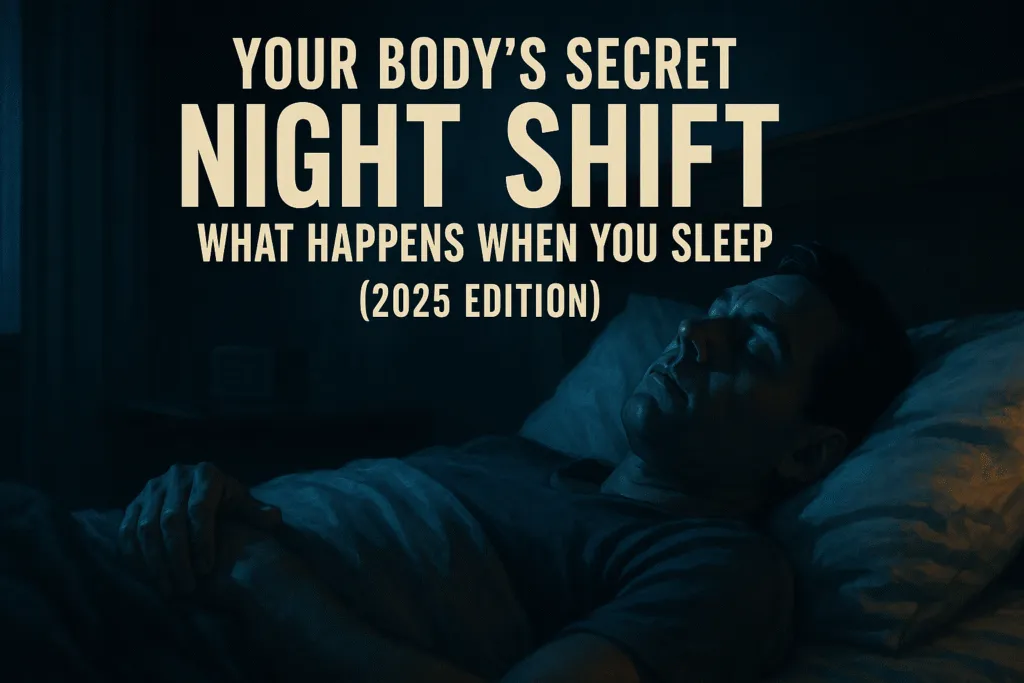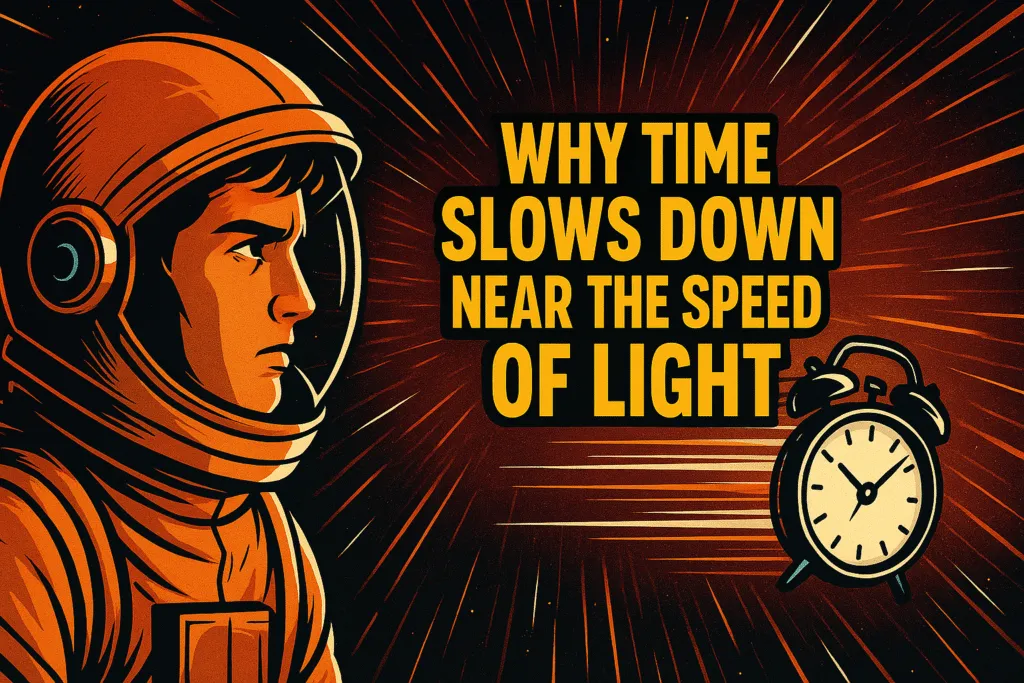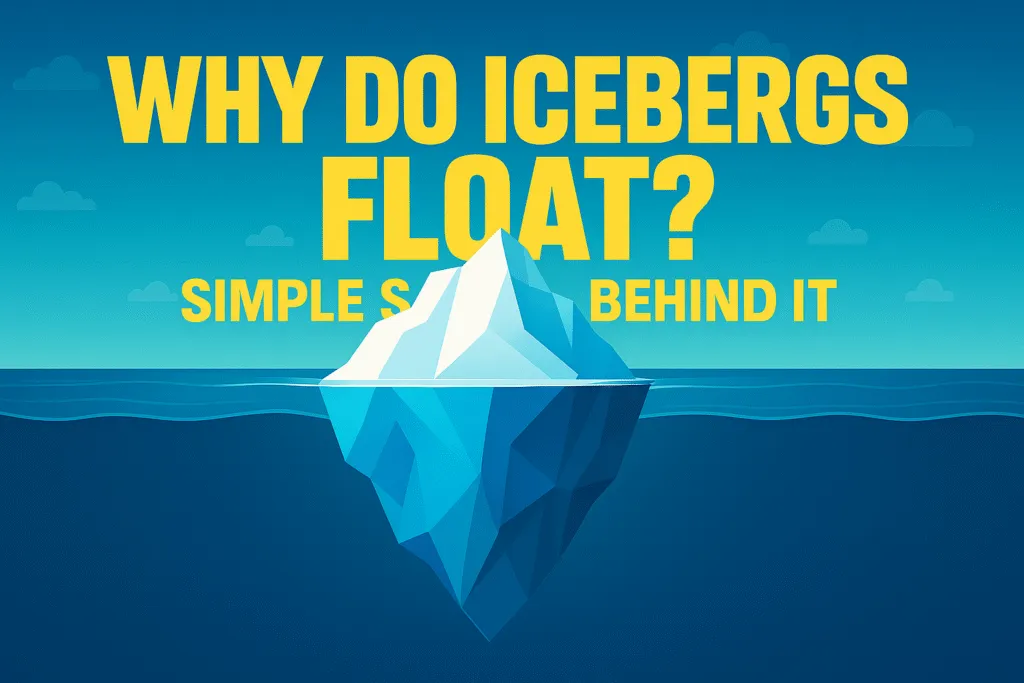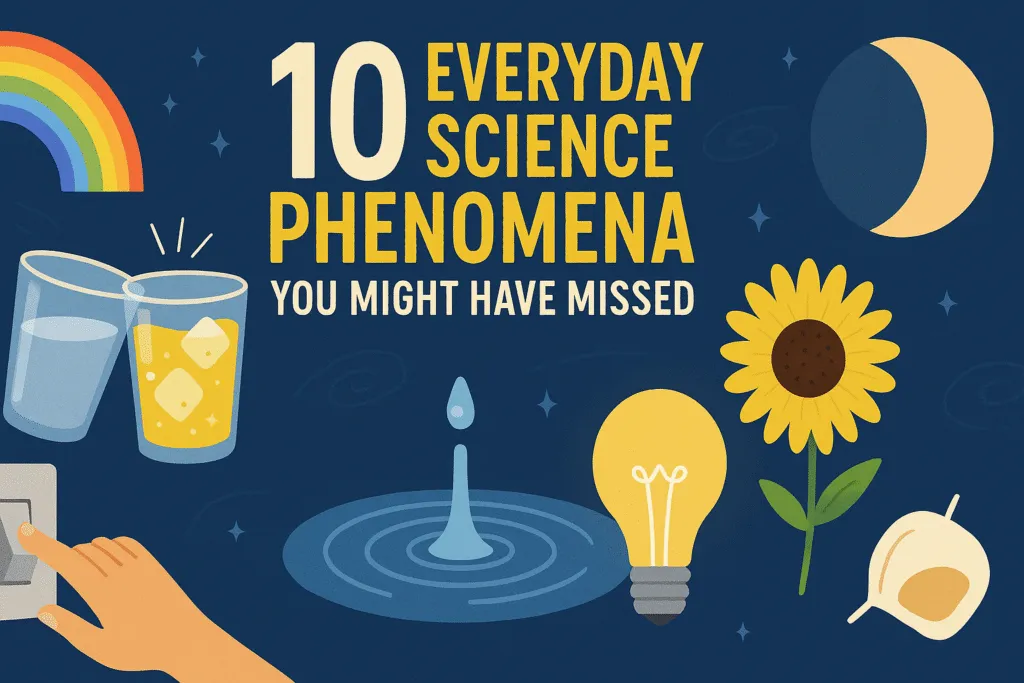Introduction: The Fascination with Time Travel
Time travel has fascinated scientists, storytellers, and thinkers for generations. The idea that we could move backward or forward in time unlocks limitless possibilities—meeting our ancestors, witnessing historic moments, or even glimpsing the future. As a tech blogger, I’ve seen how science fiction often pushes the boundaries of real-world innovation, and time travel remains one of the most captivating ideas that bridge imagination and science.
While many believe time travel exists only in fiction, modern physics suggests otherwise. Theories rooted in Einstein’s general relativity hint that under certain extreme conditions, time could behave differently. This has sparked countless debates and experiments aimed at exploring whether time travel is scientifically possible—or if it’s forever destined to stay in our dreams.
What makes time travel truly fascinating is how it challenges our understanding of reality. It questions the linear nature of time, the concept of cause and effect, and even our sense of free will. Could changing the past alter the future? Or are all moments in time fixed and unchangeable?
In this blog, we’ll explore a tiny glitch in physics that might bring us closer to cracking the code of time travel. As research in quantum mechanics, spacetime geometry, and cosmic anomalies advances, 2025 could be the year we move from theory to possibility. Let’s dive into the science, the paradoxes, and the hope that one day, time travel might not just be a fantasy—but a real part of human exploration.
What Is This ‘Tiny Physics Glitch’?
In the precise and rule-bound world of physics, even the smallest inconsistencies can open the door to revolutionary discoveries. When we talk about a “tiny physics glitch,” we’re referring to subtle anomalies in the way time and space behave—anomalies that don’t quite fit into our current understanding of the universe. These glitches may seem insignificant on the surface, but they challenge the very framework of classical physics and hint at the potential for time travel.
One such glitch appears in quantum mechanics, where particles sometimes behave in ways that seem to defy logic. For example, particles can become entangled and affect each other instantly across vast distances—an effect Einstein famously called “spooky action at a distance.” These quantum behaviors don’t align neatly with the traditional flow of time and suggest that our perception of cause and effect might not be as fixed as we think.
Another possible glitch lies in the concept of closed timelike curves (CTCs), which emerge from Einstein’s equations of general relativity. These loops in spacetime suggest that under certain extreme conditions, like near a rotating black hole or in a wormhole, time could fold back on itself—creating a path that returns to the same point in time. Though still theoretical, CTCs have captivated physicists for decades because they offer a mathematical basis for time travel.
What makes this glitch so exciting in 2025 is the increasing precision of experiments in quantum physics and gravitational research. Scientists are beginning to simulate these anomalies in controlled environments, bringing us closer than ever to understanding whether time travel is truly possible—or if it remains a beautiful illusion born from the cracks in our physical laws.
Einstein’s Equations and Closed Timelike Curves (CTCs)
Albert Einstein’s general theory of relativity forever changed the way we understand gravity, space, and time. His equations revealed that space and time are not fixed, separate entities—they’re part of a single, flexible fabric called spacetime. This insight opened the door to concepts once considered pure science fiction, including time travel.
One of the most intriguing predictions of Einstein’s equations is the possibility of closed timelike curves, or CTCs. A CTC is a theoretical path through spacetime that loops back on itself. In simpler terms, it allows an object—or even a person—to return to the exact point in time and space where they started. This loop would essentially make time travel not just possible, but mathematically valid within the framework of general relativity.
CTCs aren’t just wild ideas. They emerge naturally in certain solutions to Einstein’s field equations. For example, physicist Kurt Gödel found a solution that allowed for time loops in a rotating universe. Other scientists have theorized that massive rotating objects, like a hypothetical structure called a Tipler Cylinder, could bend spacetime into a loop, forming a CTC.
However, just because the math works doesn’t mean it’s practical. Creating or accessing a CTC would require immense gravitational forces and exotic forms of matter—things far beyond our current capabilities. Still, the very existence of CTCs in Einstein’s equations suggests that time travel is not ruled out by the laws of physics.
As research in 2025 pushes the boundaries of our understanding, closed timelike curves continue to be a central focus in the quest to unlock real-world time travel. They serve as a reminder that even the most rigid laws of nature might contain surprising loopholes—tiny cracks through which the impossible becomes possible.
Wormholes: Nature’s Possible Time Machines
Among all the mind-bending theories that suggest time travel might be possible, wormholes stand out as one of the most compelling. Often called “Einstein-Rosen bridges,” wormholes are hypothetical tunnels in the fabric of spacetime that connect two distant points. If they exist and can be stabilized, they might allow for near-instant travel between locations—and potentially between different points in time.
The idea of wormholes comes directly from Einstein’s general relativity. In 1935, Einstein and physicist Nathan Rosen proposed that two black holes could be connected by a bridge in spacetime. This bridge, or wormhole, would act like a shortcut, bypassing the normal flow of time and space. While this remains a theoretical construct, it’s one that physicists take seriously due to its solid mathematical foundation.
So how does this relate to time travel? If one end of a wormhole experiences time differently than the other—perhaps by being near a strong gravitational field or moving at high speeds—it could create a time gap between the two openings. Travel through such a wormhole might allow someone to exit in the past or the future relative to when they entered. In essence, wormholes could be nature’s built-in time machines.
However, there’s a catch. Wormholes, if they exist, would be incredibly unstable. They could collapse instantly unless held open by something known as exotic matter—an extremely rare or possibly theoretical form of matter with negative energy density. This is one of the biggest challenges scientists face in turning wormholes into usable pathways.
Still, as quantum physics advances and researchers experiment with gravitational fields and energy manipulation, wormholes remain one of the most promising leads in the pursuit of time travel. In 2025, they symbolize the fine line between science fiction and future reality.
Quantum Tunneling: Defying Classical Logic
Quantum tunneling is one of the strangest and most fascinating phenomena in modern physics—and it might hold clues to how time travel could one day become possible. In classical physics, if a particle doesn’t have enough energy to overcome a barrier, it simply can’t pass through. But in the quantum world, things work differently. Thanks to quantum tunneling, particles can sometimes “tunnel” through barriers they shouldn’t be able to cross at all.
This effect has already been observed and even applied in technologies like tunnel diodes and quantum computing. What makes quantum tunneling so strange is that it appears to violate the classical idea of cause and effect. A particle disappears on one side of a barrier and reappears on the other without physically traveling through the space in between, at least not in the traditional sense.
So, how does this relate to time travel? Some physicists believe that quantum tunneling isn’t just a spatial shortcut—it could involve temporal shifts as well. There are theoretical models where tunneling events appear to take no time or even seem to occur faster than light would allow. If a particle can take such a “shortcut” through time, it opens the door to concepts like time loops or backward time travel on a subatomic scale.
In 2025, as quantum research advances and more accurate experiments are being conducted, scientists are beginning to explore whether this behavior can be scaled up or controlled. If we ever find a way to manipulate quantum tunneling on a larger level, it might be possible to bend—not just space—but time itself.
While it’s still early days, quantum tunneling challenges everything we think we know about reality. And for time travel enthusiasts, it offers a glimpse into how nature might already be bending the rules—quietly, invisibly, and constantly.
Time Dilation: Already Proven, Just Not Practical Yet
Time travel isn’t just a theory—it’s already been observed, thanks to a fascinating concept called time dilation. Predicted by Albert Einstein’s theory of relativity, time dilation occurs when time moves at different rates depending on speed or gravity. The faster you travel or the stronger the gravitational field you’re in, the slower time passes for you compared to someone else. This isn’t science fiction; it’s been measured in real-world experiments.
For instance, atomic clocks flown on high-speed jets or placed on GPS satellites tick slightly slower than identical clocks on Earth. Though the difference is tiny—fractions of a second—it proves that time can stretch or compress based on your motion or location in a gravitational field. This phenomenon confirms that time is not a constant, universal flow but something that can be warped, making it a crucial piece of the time travel puzzle.
The problem? Time dilation only becomes noticeable at extreme speeds or gravitational forces. To experience meaningful time travel into the future, you’d need to travel near the speed of light—something our current technology simply can’t do. Even the fastest spacecraft ever built can’t get us anywhere close to the speeds required to make this effect practical on a human scale.
Still, time dilation remains one of the most concrete examples of how time travel might work. Unlike theories based solely in mathematics, this effect has been observed and verified multiple times. The challenge now is scaling it up in a way that could make actual time travel possible.
As we head further into 2025, advancements in propulsion systems and gravitational research may slowly push us closer to turning this proven but currently impractical phenomenon into something we can truly harness for real-world time travel.
Could Time Crystals Be the Key in 2025?
Time crystals may sound like something out of a science fiction novel, but they’re very real—and they’re shaking up how scientists think about time itself. First proposed in 2012 and experimentally created in the years that followed, time crystals are a new phase of matter that challenge our traditional understanding of physics. Unlike ordinary crystals, which repeat their structure in space, time crystals repeat in time without using energy. This bizarre behavior has caught the attention of physicists exploring the possibility of time travel.
So, what exactly makes time crystals special? In most systems, motion and energy are linked. If something moves, it consumes energy. But time crystals can oscillate in a stable, repeating cycle without energy loss, effectively existing in a perpetual state of change. This strange, glitch-like quality defies classical physics and hints at a deeper symmetry in nature—one that involves time itself.
Why does this matter for time travel in 2025? As quantum technologies evolve, researchers are learning how to manipulate time crystals in controlled environments. Some believe that time crystals could one day help create stable conditions for closed time loops or preserve quantum states in a way that bends our linear experience of time. While the science is still in its early stages, time crystals may offer a quantum foundation for understanding how time could be paused, looped, or even reversed.
In 2025, advancements in quantum computing and condensed matter physics are accelerating fast. As scientists continue to explore the properties of time crystals, they might uncover a mechanism that unlocks not just a new form of energy efficiency, but also a deeper control over time itself. If there’s a quantum key to time travel, time crystals could very well be it.
The Grandfather Paradox and Other Logical Roadblocks
Time travel isn’t just a scientific challenge—it’s a logical minefield. One of the most well-known dilemmas in the conversation about time travel is the grandfather paradox. It poses a simple but mind-bending question: what happens if you go back in time and prevent your grandfather from meeting your grandmother? If that happens, you would never be born—and therefore wouldn’t exist to travel back in time in the first place. This contradiction puts a serious dent in the idea of changing the past.
The grandfather paradox highlights a fundamental issue: cause and effect. If actions in the past can be changed, then the future should logically shift—but that creates inconsistencies that physics struggles to resolve. This isn’t just a storytelling problem seen in movies; it’s a real concern for scientists studying the mechanics of time travel.
Beyond the grandfather paradox, there are other logical roadblocks too. One is the bootstrap paradox, where an object or piece of information is sent back in time and ends up being the very cause of itself. For example, if a time traveler hands Shakespeare a copy of Hamlet, and Shakespeare then publishes it as his own, where did the play really originate? It’s a loop with no clear beginning—challenging our ideas of origin and authorship.
Then there’s the question of free will. If time is fixed and unchangeable, do we really have the power to alter anything in the past? Or are we merely following a script that’s already written?
In 2025, while physics continues to explore the possibilities of time travel, these paradoxes remain a major philosophical and logical hurdle. Unless we find new models of time—like branching timelines or multiverse theories—we may never fully resolve these contradictions. But understanding them is crucial if we ever hope to navigate the timeline without tearing it apart.
Real Experiments Hinting at Temporal Loopholes
While time travel may sound like a distant dream, several real-world experiments have already hinted at the existence of temporal loopholes—phenomena where time doesn’t behave the way we expect. These experiments, though grounded in serious physics, suggest that the rigid flow of time might not be as fixed as we once believed.
One of the most famous examples is the Hafele–Keating experiment in 1971, where atomic clocks were flown around the Earth on commercial airliners. When compared to clocks that remained stationary, the flying clocks showed measurable differences—proving that time had passed at different rates due to motion and gravity. This was one of the first experimental confirmations of time dilation, a concept at the heart of Einstein’s theory of relativity.
More recently, researchers have observed quantum entanglement, where two particles seem to interact instantly across vast distances—what Einstein once called “spooky action at a distance.” Some interpretations of this behavior suggest that information might be traveling faster than light or even backward in time, although the reality is far more complex. Still, these quantum quirks hint at time behaving very differently on the smallest scales.
Another intriguing development is in the field of quantum computing, where researchers simulate exotic physical conditions—like closed timelike curves—using entangled particles. In one theoretical experiment, scientists ran a quantum algorithm where a particle interacted with a past version of itself, creating a kind of simulated time loop. While purely experimental, it opens the door to more controlled studies on how time might be bent or folded in non-traditional ways.
In 2025, with advancements in particle accelerators, quantum simulations, and time-sensitive technologies, the line between science fiction and reality is blurring fast. These real experiments don’t just suggest time travel might be possible—they force us to reconsider what time actually is.
What Makes 2025 Crucial for Time Travel Research?
The year 2025 is shaping up to be a turning point for time travel research—not because someone has built a working time machine, but because science is finally catching up with theory. Decades of speculation, mathematical models, and quantum experiments are beginning to converge in ways that could redefine how we understand time itself.
One major reason is the rapid progress in quantum computing. In 2025, quantum processors are more stable, scalable, and accessible than ever before. These machines are not just faster—they’re capable of simulating complex phenomena like entanglement, quantum tunneling, and even closed timelike curves. This gives physicists a powerful tool to test time-related hypotheses in virtual environments without needing enormous amounts of energy or exotic matter.
Another reason is the advancement of gravitational wave detection. Since the first detection in 2015, gravitational wave observatories have become more sensitive. In 2025, next-generation detectors are being used to study how spacetime ripples under extreme conditions—like near black holes or neutron star collisions. These observations are critical to understanding how time can warp, stretch, or even loop under intense gravitational forces.
Additionally, breakthroughs in material science and quantum phases of matter, like time crystals, are allowing researchers to explore entirely new properties of time in laboratory settings. Time symmetry, temporal oscillations, and zero-energy time cycles—once theoretical concepts—are now being observed under controlled conditions.
Funding and public interest are also at an all-time high. With global space agencies and private tech giants investing in deep space research and advanced physics, time travel is no longer just a fringe topic—it’s part of mainstream scientific curiosity.
In short, 2025 is crucial because it marks the moment where the theoretical and experimental finally meet. It’s not the year we invent a time machine, but it may well be the year we discover that the rules of time are far more flexible than we ever imagined.
Challenges: Why Aren’t We Time Traveling Yet?
Despite all the fascinating theories, promising experiments, and mind-bending quantum discoveries, time travel remains out of reach—at least for now. The reasons are not just scientific but also technological, logical, and even philosophical. Understanding these challenges helps explain why, in 2025, we still aren’t stepping into time machines.
The biggest obstacle is energy. Most serious time travel theories, such as those involving wormholes or closed timelike curves, require unimaginable amounts of energy—often involving something known as negative energy or exotic matter, which may not even exist in a usable form. Even if it does, we currently have no way to generate, contain, or stabilize it.
Another challenge is stability. Wormholes, if they exist, are believed to collapse almost instantly upon formation. To keep one open long enough for anything to pass through—let alone a human—would require technology that’s decades, if not centuries, ahead of where we are now.
Then there’s the issue of paradoxes. Logical problems like the grandfather paradox or the bootstrap paradox pose serious concerns for causality. Physics relies heavily on the idea that cause comes before effect, and time travel threatens to break that fundamental rule. Without a solid solution to these contradictions, many scientists are hesitant to take time travel beyond thought experiments.
Additionally, our current technology simply can’t manipulate gravity, spacetime, or quantum states at the scale required for time travel. While quantum computers and gravitational wave detectors are promising tools, they’re still in early stages and far from being able to engineer the kinds of conditions time travel theories demand.
Finally, there’s the possibility that nature doesn’t allow it—that some yet-undiscovered law of physics prevents time travel entirely. Until we understand more, we’re limited by the boundaries of what we know and what we can build.
So while 2025 holds promise, the road to time travel is still full of deep questions and even deeper challenges.
Conclusion: Are We Closer Than Ever?
Time travel has long existed in the realm of imagination, but in 2025, it’s no longer just a sci-fi fantasy—it’s an active area of scientific curiosity. With advances in quantum computing, gravitational wave research, and exotic theoretical physics, we’re beginning to understand time not as a fixed arrow, but as something far more flexible and mysterious.
Concepts like closed timelike curves, time dilation, and wormholes are no longer confined to blackboards and thought experiments. They’re being explored in laboratories, simulated by quantum processors, and discussed seriously by physicists around the world. Time crystals, once a purely theoretical phase of matter, now offer real-world insights into how time might be manipulated or even cycled in entirely new ways.
However, while the theories are intriguing and the evidence is growing, the practical barriers remain enormous. We don’t yet have the tools to bend spacetime, generate exotic matter, or resolve the paradoxes that come with tampering with time. And even if we solve those problems, we must consider the ethical, philosophical, and societal impacts of moving through time.
Still, the progress made in recent years—and especially in 2025—shows that we may be closer than ever to answering the big question: is time travel possible? Maybe not today, and maybe not in the way we’ve seen in movies, but the door isn’t closed. It’s slightly ajar, and each discovery pushes it open just a little more.
Whether we’ll ever step into a machine and leap through time remains to be seen. But the science is catching up with the dream, and in that sense, the journey to time travel has already begun.
Also Read: Your Body’s Secret Night Shift: What Happens When You Sleep (2025 Edition).
FAQs About Time Travel in 2025
Q1. Is time travel scientifically possible in 2025?
Time travel is not practically possible yet, but it’s not ruled out by the laws of physics. Concepts like time dilation, wormholes, and closed timelike curves are being explored scientifically, and research in 2025 is closer than ever to testing these theories.
Q2. What is the most realistic form of time travel known today?
Time dilation, as predicted by Einstein’s theory of relativity, is the most proven form of time travel. It allows time to pass at different rates depending on speed or gravity. While the effects are small, they’ve been measured using atomic clocks on planes and satellites.
Q3. Can wormholes really be used for time travel?
Theoretically, yes. Wormholes could connect different points in space and time, acting as shortcuts. However, they would require exotic matter to remain stable, which hasn’t been discovered or created in a usable form.
Q4. What is a closed timelike curve (CTC)?
A CTC is a path through spacetime that loops back on itself, theoretically allowing an object to return to its starting point in both time and space. It’s a concept that arises from Einstein’s equations, but has not yet been observed in reality.
Q5. What are the major obstacles to building a time machine?
Key challenges include generating massive energy, manipulating spacetime, stabilizing wormholes, and solving logical paradoxes like the grandfather paradox. Our current technology is far from overcoming these barriers.
Q6. Are there any real experiments that support time travel?
Experiments involving time dilation, quantum entanglement, and quantum tunneling hint at time-related anomalies. While none confirm practical time travel, they support the idea that time is more flexible than once believed.
Q7. Could time crystals lead to time travel in the future?
Time crystals don’t enable time travel directly, but they reveal unusual temporal behaviors in quantum systems. As research evolves, they may contribute to our understanding of how time can be controlled or manipulated.
Q8. Will time travel become a reality in our lifetime?
It’s difficult to predict. The science is advancing, especially in 2025, but significant breakthroughs in physics, engineering, and energy would be required. For now, time travel remains a fascinating possibility—not an imminent reality.
